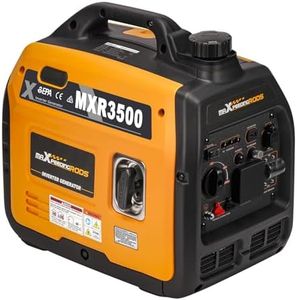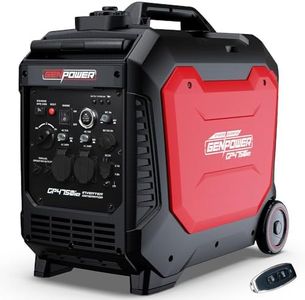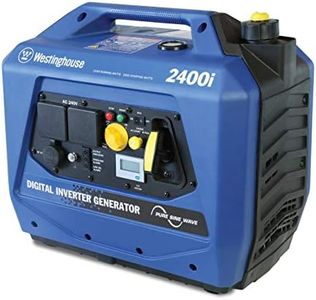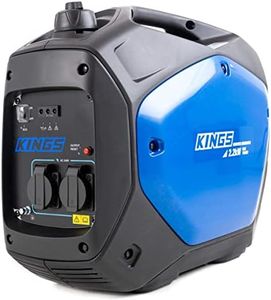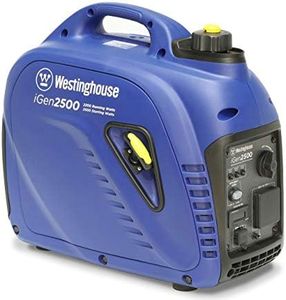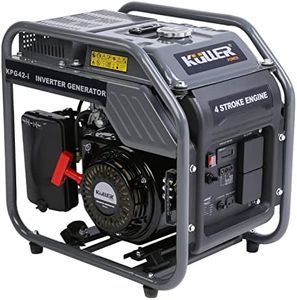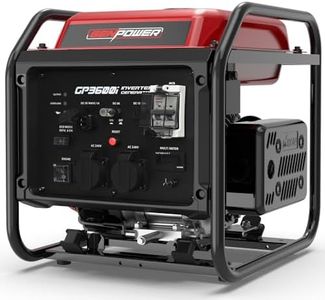We Use CookiesWe use cookies to enhance the security, performance,
functionality and for analytical and promotional activities. By continuing to browse this site you
are agreeing to our privacy policy
10 Best Portable Inverter Generators
From leading brands and best sellers available on the web.Buying Guide for the Best Portable Inverter Generators
Choosing a portable inverter generator can seem tricky, but with the right approach, you’ll end up with a product that matches your needs and lifestyle. The key is to understand your intended usage: Will you be camping, tailgating, powering sensitive electronics, or as a source of backup power during outages? Knowing what you want to run with the generator will help you filter through the features and specifications that matter most, leading you to a model that feels just right for you.Wattage (Power Output)Wattage tells you how much electrical power the generator can provide, both at its maximum (starting/surge watts) and during continuous use (running watts). This is essential because every device or appliance you plan to run has a specific wattage requirement. Generators come in different power ranges: lower wattage models (usually below 2000W) are great for charging phones, laptops, and running lights, while mid-range (2000–3000W) can handle larger camping gear and small appliances, and higher wattage (above 3000W) can support refrigerators or power tools. To pick the right one, make a list of what you want to power and add up their wattages—choose a generator that meets or slightly exceeds this number to ensure safe, reliable operation.
Portability (Weight and Size)Portability measures how easy it is to move and transport the generator. Portable inverter generators can range from compact units under 40 pounds, ideal for carrying by hand to a campsite, to larger options with wheels suitable for home use or heavier-duty needs. Consider where and how you'll use the generator: if you need it for outdoor trips or frequent travel, lighter is better; for stationary backup at home, a heavier unit with a wheel kit can be manageable. Think about how much lifting or handling you’re comfortable with before making a decision.
Noise Level (Decibels)Noise level, measured in decibels (dB), indicates how loud the generator is when running. Inverter generators are typically quieter than traditional ones, but the noise can still vary. Lower noise (around 50–60 dB) is similar to a normal conversation and is ideal for camping, tailgating, or use in quiet neighbourhoods. Louder models (above 65 dB) might be suitable if noise isn’t a concern, like on a construction site. If you’re sensitive to noise or want a peaceful setting, look for quieter models.
Fuel Type and EfficiencyMost portable inverter generators run on gasoline, but some can also use propane or even dual-fuel options, giving you flexibility. Fuel efficiency describes how long the generator can run on a certain amount of fuel, often listed as runtime at a set load (like 25% or 50%). Longer runtimes mean less refueling and more convenience, especially during overnight use. Consider how easy it is for you to access fuel and whether longer runtimes between fill-ups would make your life easier when choosing.
Outlet Types and FeaturesThe outlets on a generator determine what you can plug in directly—look for standard household outlets, USB ports, or even RV-style plugs depending on your devices. Some models also include parallel capability, which lets you connect two generators for extra power. If you plan to charge delicate electronics, make sure the generator offers clean 'inverter' power with low Total Harmonic Distortion (THD) for safety. Assess what kind of items you’ll connect and choose a machine with suitable and sufficient outlets.
Safety FeaturesSafety features such as overload protection, low oil shut-off, and CO (carbon monoxide) detection are designed to protect both the user and the generator from harm. Overload protection stops the generator if you try to draw too much power, and low oil shut-off will turn off the engine if oil levels get too low to prevent serious damage. CO detection is a newer feature that helps prevent dangerous carbon monoxide buildup. Consider where and how you’ll use the generator, especially if it’s near people or pets, and prioritize safety features accordingly.
